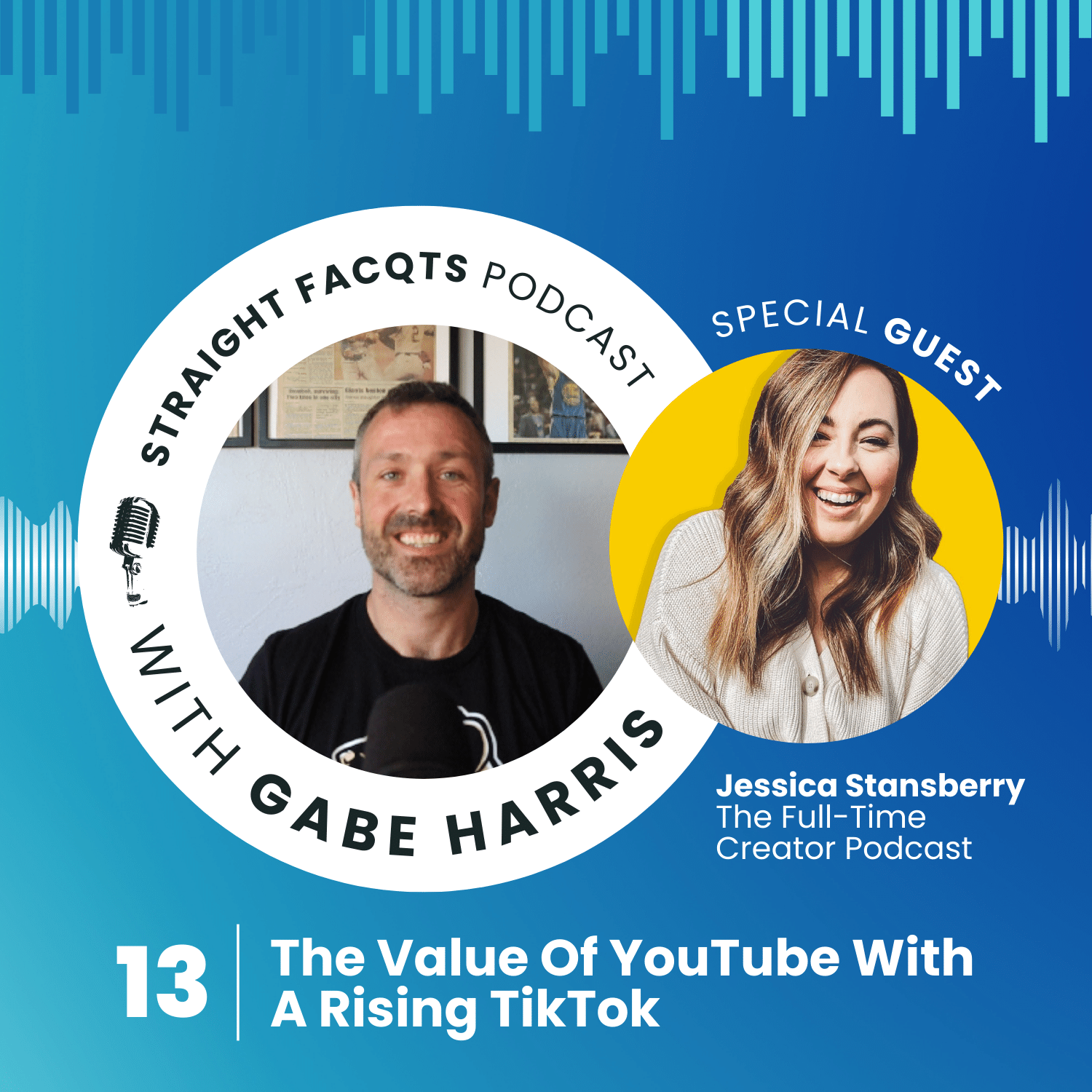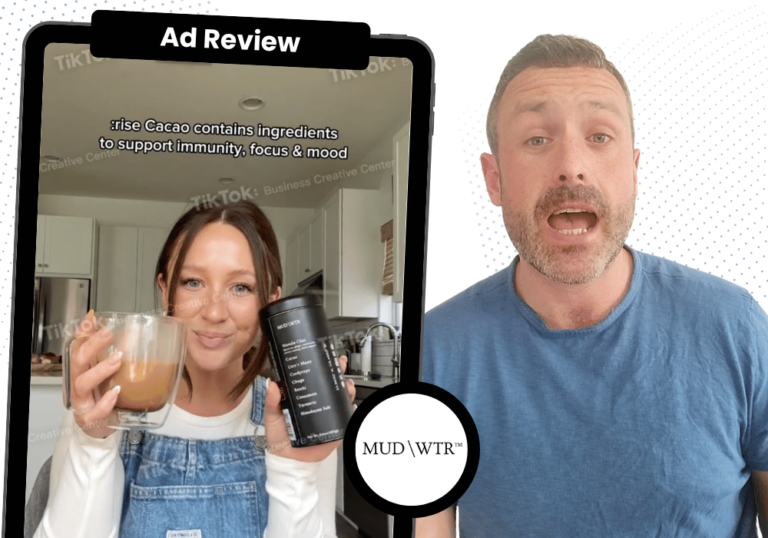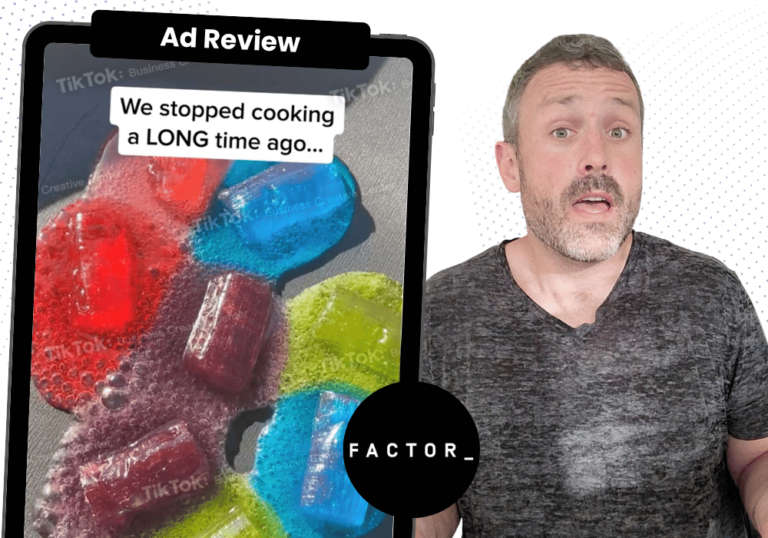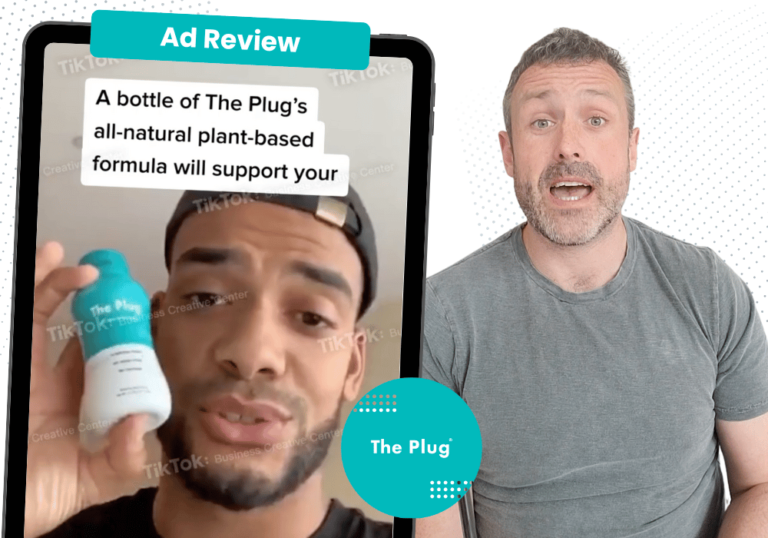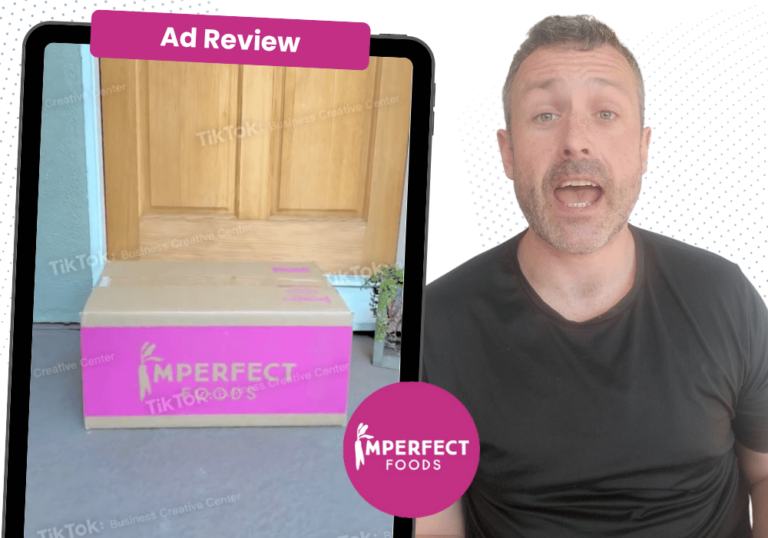On this episode, we’re talking to course creator extraordinaire, Jessica Stansberry, on the value of YouTube and how you can be able to utilize social to boost your audience to get them to buy your digital course. Let’s get into it!
Gabe Harris:
We are here today with Jessica Stansberry. Jessica, super excited to be able to talk to you today about creating courses and how you can be able to utilize social to be able to push those courses even further.
Jessica Stansberry:
Gabe Harris:
But I would love to be able to hear about, really, if somebody’s looking to be able to start their course, to get their knowledge out there, what would be the first steps that they would need to do before they even start the course?
Jessica Stansberry:
I have seen, and I have done it myself, but I’ve seen clients and customers be able to make $50,000 and $100,000 dollars from a course sale with a pretty small audience. But, you do have to have an audience. That’s the difference in course sales and a service.
Because if you’re going out here doing web design for people, a lot of it, you don’t have to have an audience. You can do a lot of it word of mouth. But with a course or anything in that passive income realm, you really need an audience behind you.
So, building an audience of the people who are going to eventually want to buy your course would be step number one for sure.
Gabe Harris:
Jessica Stansberry:
Who are they going to be? Who are these people? Then from there, figure out where they hang out. If they’re younger, millennials all the way down to Gen X, Y, Gen Z, I had to think about that for a second, if they’re all of those, then maybe TikTok is it.
If they are older millennials up, maybe it’s Instagram. Or if they are boomers, maybe it’s Facebook. So where your people hang out, that’s your preferred content platform.
So figure out who they are, where they hang out, and then start creating content on that platform for them. What I always like to tell people is right now in the world we’re in, the content you want to create is educational.
So, understand what their problem is and how you can create content to help solve that problem, but also create content that makes them feel seen. It makes them feel like you are talking directly to them and they’re like, “Oh, my gosh, yes. I feel this. I understand this.”
That’s why Reels and TikToks do so well half the time because they’re sharable.
“You’ve got to create content to make them problem-aware and then also aware of the solution, so solution-aware, because then at that point, they want to buy the thing from you to actually get the solution.”
I saw something just this morning and now I can’t even remember what it was, but it was a TikTok. Oh, it was this girl who I’m friends with and she was stitching on TikTok this video where this girl was like, “Watch this hack where you don’t ever have to watch an ad again on YouTube without paying for the YouTube grid or whatever.”
My friend literally just hit monetization status on YouTube. So she was like, “Oh, my gosh,” and she put her head in an oven on TikTok. That makes me feel seen. That makes me feel like, “Oh, my gosh, yes,” because I have worked so hard to be monetized. Don’t tell people how to watch YouTube without ads.
It’s just these things where it’s like, solve problems for them. In the stream of what people need to do, they need to know they have a problem. Then they need to understand that there can be a solution and then they need to know what the solution is and hopefully, you’re selling that solution.
So you’ve got to create content to make them problem-aware and then also aware of the solution, so solution-aware, because then at that point, they want to buy the thing from you to actually get the solution.
Gabe Harris:
Jessica Stansberry:
But otherwise, you would definitely want to create a business or brand account because I know a lot of people will have personal accounts where they share pictures of their kids, but they’re not going to share that on the business side.
It’s up to you, honestly, but if you’ve created some larger following, you might want to consider just flipping that into a business account because it’s going to give you that clout from the beginning. Otherwise, it doesn’t matter.
Gabe Harris:
Jessica Stansberry:
Gabe Harris:
Jessica Stansberry:
I live on a farm and my husband is a farmer and he knows how to garden and do the things that I don’t know how to do. But in our garden, we currently have one sunflower, and we didn’t plant sunflowers. It’s just randomly bloomed on its own. So we have one sunflower.
Up here near my house, in my flower garden, we have either squash, pumpkin growing. We can’t figure out where it came from. Then behind my house, again, not in a garden, we have a tomato plant that just is growing tomatoes and we don’t know where it came from.
That has nothing to do with my business, like 0% to do with my business, but it’s fun content to show people and it brings people behind the scenes like, “Oh, this girl lives on a farm that’s very different from me. I find that really interesting,” and all of this stuff.
It has nothing to do with my business, but it makes them feel like they know me. And when they know me and they like me and they trust me, then they trust and like my business too.
Gabe Harris:
They have to get content to be able to show that “I know what I’m talking about” and that’s not a process where the audience is going to… Say if you just started a course. I imagine you do a couple posts of that and then you say, “Buy my course.” That may or may not work.
So what’s the strategy to be able to build that audience up? When do you actually start asking for the sale or when do you start pitching yourself or do you start pitching yourself?
Jessica Stansberry:
80% of your content should be information-giving, educational, entertaining, just all the things that are not sales-y. And then 20% of the time, you can actually ask for the sale or ask them to subscribe to your email list or whatever the scenario is.
Once you have the offer, that’s where I would sit. But before that, you really want to create content that gathers them in. So again, educational content on all of these platforms, problem-aware content, solution-aware content.
All of these things are going to cause them to raise their hand and be like, “Okay, I want in this audience” because they have the choice on following you or subscribing to you or watching more of your videos or whatever the scenario is. You’ve got to give them a reason to want to do that.
“Helpful tips and tricks, things that help people move towards the solution they’re trying to find, and things that really help people feel like you understand them, that’s what’s going to seal the deal on building the audience.”
Product-based businesses and retail are the worst for this, but online businesses do it too. All they’re posting about is their product, their sale, their thing. It’s always sales-y.
Even if they’re not saying, “Come buy our thing,” it’s just like, “Look, we got this new hair scrunchie in the store,” or whatever and that’s not relevant nor is it helpful to the audience.
So nobody’s going to choose to subscribe if all of your content is like, “Look at my new thing. Look at this new thing. Look at that new thing. I did this. I did that.”
That’s not what people are going to follow you for, but helpful tips and tricks, things that help people move towards the solution they’re trying to find, and things that really help people feel like you understand them, that’s what’s going to seal the deal on building the audience.
Then you switch over to that 80/20 and 80% of the time, you’re still doing the same thing. 20% of the time, you’re asking for the sale.
Gabe Harris:
Jessica Stansberry:
If you need to hard sale, you can do it during that 20% of the time, but sometimes that 20% is more of a soft sale. It just depends on what’s going on, what you’re promoting, what your content is doing, what your audience needs to see.
But during that 80% of the time, you can still be passively selling in super incognito ways, not verbally, not being like, “Oh, go buy my thing,” but having links in your bio or links in the description on YouTube or whatever the scenario is so that people, if they decide they want to buy while watching that 80%, they can still do that.
Gabe Harris:
Jessica Stansberry:
Gabe Harris:
Jessica Stansberry:
My kids were babies and I was just doing web design, no online presence at all. Then in 2015, I started ramping up my online presence. 2016, I really started doing content creation and courses.
Gabe Harris:
Jessica Stansberry:
Gabe Harris:
Jessica Stansberry:
When I first started, it was, I don’t know if anybody remembers, Periscope, but that was a thing when I first started. It’s how I got my start in video.
Basically, if you don’t know, it was live videos and they were vertical form and it was an app all by itself. Then Facebook killed it when they came out with Facebook Live, so it basically just went away. But Periscope was a thing when I first started and Facebook groups were a massive strategy that I think can still be a massive strategy now, but not as much.
“If you’re trying to grow an audience in any form or fashion, you have to be doing video.”
But the biggest thing I would say is that video is so important now, and not that it wasn’t then, but it’s just 10 times more important now than it was then.
I guess the biggest thing I would say I would do now that I might not have said five or six years ago was that every business owner needs to be on video, at least if you’re wanting to build an audience.
Obviously, if you want the type of business where you’re just like a service provider or you have a retail store and you just want local traffic, whatever, but if you’re trying to grow an audience in any form or fashion, you have to be doing video.
Gabe Harris:
Would you still put that near the top of where attention should be or has it actually dropped where things are more significant than focusing your time on Facebook groups?
Jessica Stansberry:
We had our time in Facebook groups back in 2015, 2016, 2017. But if you’re someone who is targeting stay at home moms, I feel like stay at home moms are still very much so in Facebook groups, at least what I see in my local community, or runners. There’s a lot of Facebook groups for runners. I have a Peloton. There’s a ton of Facebook groups for Peloton users.
So I think it depends on your industry and whether or not Facebook group usage is high because some industries, yes, and some industries, no, but I definitely wouldn’t put it super high in the list.
Gabe Harris:
Has anything started to peak your interest in where people should best allocate their time if it’s not Facebook groups within those groups of people?
Jessica Stansberry:
I just recently ran a Discord community for a little bit. I know Discord is a big thing that people are starting to play with, especially in certain industries.
“It’s less about your community having each other and more about your community showing up and being present on your social media.”
But I would say a lot of it comes down to creating community within your social media now. It’s less about your community having each other and more about your community showing up and being present on your social media so that they can have each other in the comments or in the replies on TikTok or whatever the scenario is.
But yeah, I don’t feel like there’s a great place that the people who aren’t in Facebook groups have moved over to because it’s still all over the place.
Some are on Discord, some are on Reddit, some are just in random apps that they use or text threads or whatever. But I think overall, it’s dependent on the industry again still.
Gabe Harris:
Jessica Stansberry:
Gabe Harris:
Jessica Stansberry:
Gabe Harris:
Jessica Stansberry:
“No other platform has as long of a shelf life as YouTube does.”
It is still king of content because it’s that search engine. It’s got a long tail shelf life. No other platform has as long of a shelf life as YouTube does.
So I will still fall back on YouTube and the fact that now, it’s even easier to get into YouTube because of shorts. People who don’t want to sit and film long videos can totally take advantage of the YouTube algorithm too.
I don’t love shorts personally, but I’d rather see somebody on YouTube as a whole than not. I’ve been experimenting on TikTok and I do think there’s a lot of opportunity there, but it’s different than YouTube.
On TikTok, I really have to get those followers to find me and follow me somewhere else before they’re going to convert because I can’t really get in the depths of them knowing me as a human or them thinking that I’m smart or whatever on TikTok because everything’s just so short and there’s no community and there’s hardly any way to talk to people.
But, there’s still opportunity there. It’s just you have to know how to turn that into actual connection with your audience and I feel like some people miss that part.
“Over the last month and a half, I’ve gained over 30,000 followers on TikTok and I’ve not really created that much content.”
YouTube is definitely going to be high on the list for me and that hasn’t changed in six years, like I say, until they prove me otherwise, but TikTok is definitely up there with things that I think could really help somebody grow quickly out of the gate, because over the last month and a half, I’ve gained over 30,000 followers on TikTok and I’ve not really created that much content.
It can be a great growth platform, but you have to know what to do with those people because TikTok is not the place to convert them.
Gabe Harris:
Jessica Stansberry:
Whereas yeah, like you say, I mean we have stuff, I have stuff from five years ago that still is in my top 10 videos every month.
I have a client right now who had a video. Well, first of all, most of his top 10 are two years old, but recently he had a short that he did eight months ago, and it started taking off. So it’s just a much longer tail than any other platform and we shouldn’t be sleeping on it.
Gabe Harris:
Jessica Stansberry:
Gabe Harris:
Jessica Stansberry:
Gabe Harris:
Jessica Stansberry:
Gabe Harris:
Jessica Stansberry:
Gabe Harris:
Jessica Stansberry:
People try and do it on Instagram. It was like this big thing like here’s how you go, but it didn’t work. It didn’t do what they were trying to get it to do.
All of these platforms really rely on organic growth, which is cool, but also frustrating for companies that would really just like to throw money at it and fix the problem.
Gabe Harris:
Jessica Stansberry:
Gabe Harris:
Jessica Stansberry:
Gabe Harris:
Jessica Stansberry:
Gabe Harris:
Jessica Stansberry:
When I first started on YouTube, I come from a marketing background. I love ads. I love paid advertising. That kind of stuff is fun for me. So when I first started on YouTube, I’m like, why not just run an ad to videos that I know will do well and then they’ll get subscribers and then my channel will do good? Same scenario. I’m not buying followers, but I’m trying to escalate the process.
“It can really be a problem to buy the followers in one format or another because the algorithm sees that.”
It ruined my channel. Anybody who knows anything about YouTube will tell you the same thing. Don’t ever do it.
It can really be a problem to buy the followers in one format or another because the algorithm sees that. They know that. They understand what went on and they’re going to be like, “Oh, well then, that didn’t help anything. That didn’t fix anything. We’re still not going to show their content to anybody.” So yeah, it could have the literal opposite effect of what you thought it would, which is not what you want.
Gabe Harris:
Jessica Stansberry:
Gabe Harris:
Jessica Stansberry:
Gabe Harris:
Jessica Stansberry:
Gabe Harris:
Jessica Stansberry:
YouTube bothers me with this. We don’t need shorts on YouTube, we have TikTok. We do not need shorts on YouTube, we need long-form content on YouTube. That is what people care about.
Also, we don’t need reels on Instagram, we have TikTok. I tell my kids to be a leader, not a follower. You’re not just doing what everybody else is doing.
Oh, my gosh, somebody needs to sit Instagram and YouTube down and be like, “Be a leader, not a follower. We do not want this crap.” Nobody I know. I don’t know a single person who’s like, “Yeah, I totally think we need three platforms who all do short-form video.” No. So they need to stop. It’s very much so a pet peeve of mine.
Gabe Harris:
Actually, oh, when you see people repurpose TikTok videos and put them on Instagram, do you know what that makes me want to do? Go to TikTok.
Jessica Stansberry:
The same type of content will not grow you on all of these platforms. It might keep you relevant and keep you active there, but it’s almost like if you’re speaking English and then you’re trying to take that same content and put it on a French platform or a German platform or a Spanish platform, and the people over there are like, “Oh, I don’t like this because they’re not speaking my language.”
“Original content does not do super well on Instagram Reels. It can, but it’s not the norm.”
That’s exactly what happens because on Instagram Reels, it’s very much so a lip-syncing kind of content. That’s what wins over there every single time. You get a trending audio, you use that trending audio. That will win.
Original content does not do super well on Instagram Reels. It can, but it’s not the norm. So me just sitting here talking to my camera doesn’t do super well on Instagram Reels, but on TikTok, that’s what does better, is sitting there and talking to the camera like you’re talking to a friend, not using trending audio.
Then YouTube, I don’t even know because I don’t care because they make me mad that there’s even shorts. But you’re always speaking a different language and so if we’re just throwing the same content up, it’s not getting the purpose done anyway.
Gabe Harris:
Jessica Stansberry:
Literally, every user of the platform be like, “Please don’t. We want to stay on your platform. Please don’t do this,” and the platform just be like, “Oh, well, I don’t care. I don’t care what you want to do. I want to do this.”
They’re literally signing their own death certificate. It may take a while, but they are because they’re replicating a platform we already have. So we’ll see.
Gabe Harris:
Jessica Stansberry:
Gabe Harris:
Jessica Stansberry:
It’s not going to be anything original and that’s the part that’s so frustrating.
Gabe Harris:
Jessica Stansberry:
Gabe Harris:
Jessica Stansberry:
Gabe Harris:
Ad Review: Lipstick Brands
We can go into that for a while, but now we’re going to a part where we’ve got three different video ads for you. Actually, three different lipstick ads for you to be able to rank them in what you think gets the best acquisition performance.
So not necessarily what’s the flashiest, but what you think is going to be the performer. The first one that we’ve got is Kylie Cosmetics. Cool!
Kylie Cosmetics Ad
MAC Cosmetics Ad
NYX Ad
Jessica Stansberry:
Gabe Harris:
Jessica Stansberry:
Because if you think about who is watching this and who is buying this thing, it’s likely people my age and younger, and so in the millennial age group. They’re thinking, we did this in middle school. We had the slick lipstick look in middle school and so you’re bringing that back.
I’m going to go with MAC as number one, Kylie as number two just because she’s Kylie, and then the silent one, which was NYX, right?
Gabe Harris:
Jessica Stansberry:
Gabe Harris:
Jessica Stansberry:
So I’m going to go one for MAC, two for Kylie, three for the silent one.
Gabe Harris:
Jessica Stansberry:
Gabe Harris:
Jessica Stansberry:
Gabe Harris:
Jessica Stansberry:
Gabe Harris:
Thanks for listening to our social media podcast with Jessica Stansberry!
Watch the video here:

